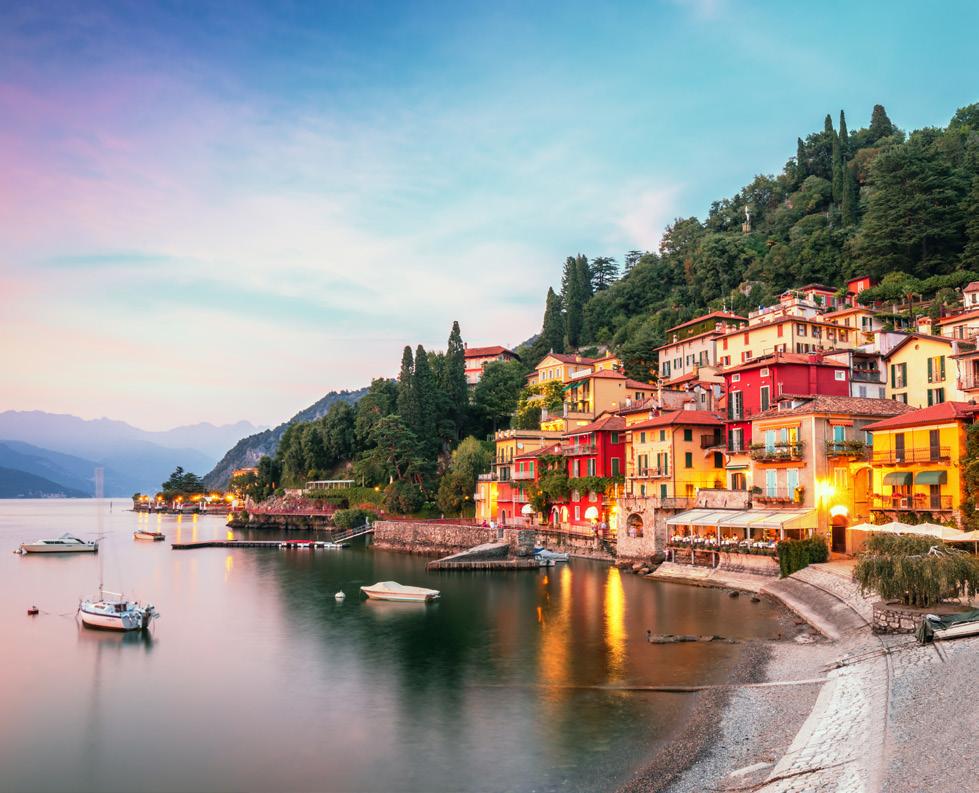
6 minute read
DINING
Giacomo Bistrot, fairytale breakfast
Immersed in the refined, elegant atmosphere of one of the best loved venues in Milan, the typically Milanese taste experience of Giacomo Bistrot also extends to breakfast and afternoon tea.
Advertisement
Many in the city are already familiar with the name “Giacomo”, because various structures have come about, all relating back to a single style, from this historic name in Milanese dining. These are locations that we could define as “special places” in Milan. To mention just a few, the “Ristorante Giacomo” in Via Sottocorno, not far away from the “Rosticceria” and “Pasticceria” with the same name, then “Giacomo Arengario” inside the Museo del Novecento, or “Caffè Giacomo”, a delightful place to stop off before or after visiting an exhibition at Palazzo Reale. This name is also echoed by “Giacomo Bistrot”, an intimate, classic venue in the tiny gourmet neighbourhood of Via Sottocorno, where you are guaranteed being able to taste dishes of quality in a romantic atmosphere. This classic bistro in French style, where you breathe an atmosphere of charm and sophistication, has recently extended its offer to also include the morning ritual of breakfast and a relaxing afternoon tea. At the weekend, to start the day well, you must try the new expertly prepared breakfast: classic or international, depending on your own personal taste, with cappuccino, coffee, fresh juices, brioches and artisan pastries straight out of the oven, or toast with a choice of fillings, eggs cooked in many different ways and other specialities. And the experience also continues after lunch, because in the afternoon break, starting from 3.30pm, you can order a tea from the most prestigious selections, accompanied by cakes, biscuits and delicious pastries.
>> Ristorante Giacomo Bistrot Via Pasquale Sottocorno 6 T: 02 76022653. Map H4w
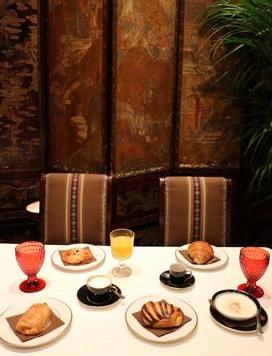
TUTTE LE “STELLE” DI MILANO Milanese tasting
Milan offers a cuisine featuring a number of truly unusual flavours. Here is a brief guide to make sure that you don’t miss out on several of the city’s best and most typical recipes.
RISOTTO ALLO ZAFFERANO This is one of the few dishes boasting a specific “birth date”. In fact, legend has it that, on 8 September 1574, master glassmaker Valerio di Fiandra was presented with a dish of saffron-coloured rice at his daughter’s wedding feast after which time it became an iconic dish of Milanese cuisine. Master Chef Gualtiero Marchesi has transformed this delicacy into a real work of art, with the addition of a square of edible gold leaf! We also suggest trying its crunchier version: so-called “riso al salto”. Try the creative dishes signed by Carlo Cracco at his restaurant in Galleria Vittorio Emanuele (www.ristorantecracco.it)
COTOLETTA ALLA MILANESE Mentioned for the first time in1500 at the court of the Sforza, its “invention” was a source of contention with the Viennese who laid claim to its origin. According to the traditional recipe, the veal slices used should be at least as thick as a finger, coated in egg and bread crumbs and deep fried in butter. One of the best places to eat breaded veal cutlets in Milan is at “Da Giannino” (www.gianninoristorante.it) or at the “Al Garghet” restaurant (www.algarghet.it). TRIPE (OR BUSECCA) A hearty winter dish that will keep the cold out, its main ingredient is the stomach lining of sheep or cows. It was originally served to celebrate special occasions in the peasant world. Upgrades include the addition of oysters and caviar and can be sampled at Michelin-starred osteria, “Al Pont de Ferr” at the Navigli district (pontdeferr.it).


CASSOEULA Acccording to the history books, composer and conductor Arturo Toscanini was mad about this dish made from pork (sausages, pork rinds and spare ribs) and cabbage. For a taste of old-world Milan, suggest you try it at “Antica Trattoria della Pesa” in Via Pasubio (www.anticatrattoriadellapesa.com).
MONDEGHILI Small meat balls fried in butter and oil and a signature dish of renowned chef Bruno
Barbieri who has made them an art form.
You can taste the traditional Milanese meat balls at “Al Matarel” (www.almatarel.it).
PANETTONE
Boasting 500 years of tradition, panettone is a type of large, sweet bread, leavened very slowly and enriched with raisins and candied fruit. Amidst history and legend, the theories as to the origins of panettone vary widely. One of
Ristorante Da Giannino
Mondeghili

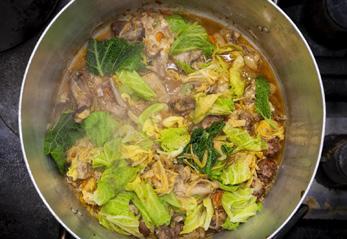
Cassoeula
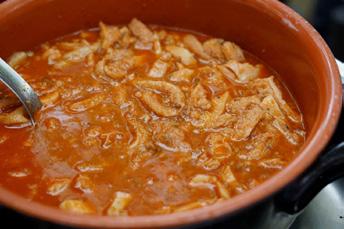
Cracco
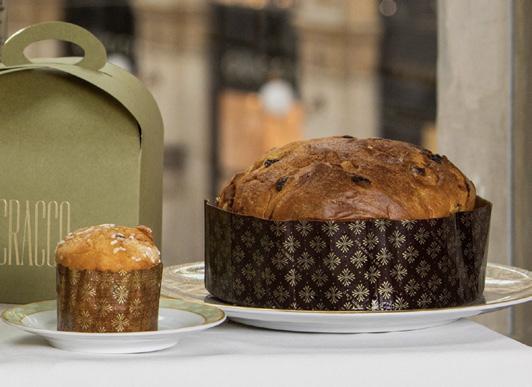
the most romantic is the story linking its invention to Ugo, a young falconer employed by Prince Ludovico il Moro. Ugo yearned to conquer the heart of the daughter of a poor baker named Toni. To win her over, the nobleman disguised himself as a baker and invented a rich bread in which he added to the flour and yeast, butter, eggs, dried raisins and candied lemon and orange peel. The fame of the bread spread far and wide and became known as “Pan del Toni” (Toni’s bread). According to history, the tradition of panettone is documented by a manuscript conserved at the Biblioteca Ambrosiana dating back to the 15th century. Already at that time, on the night of 24 December, it was customary for the pater familias to place a huge log in the fireplace and to slice the large loaf of bread which he then distributed among those present. From a gastronomic point of view, the distinguishing feature of panettone is that it is leavened two or three times. Its golden colour derives from the skilful combination of butter and egg yokes, while its overall beauty is completed by the orange, green and brown notes resulting from the addition of candied fruit and raisins. The gourmet trick is to warm it for a few minutes in front of an open oven or on top of a radiator before serving it.
Dulcis in fundo, are the city’s famous desserts, pastries and confectionery. In addition to world famed Italian gelato, an absolute “must” in summer, year-round you can also try Milan’s traditional Tiramisù (although the main ingredient of the classic recipe includes coffee, there are also other variations on the theme) and Profiteroles, mouth watering chocolate coated puffs filled with custard. Finally, there are also a number of other typical delicacies that are prepared during the holiday season including Colomba (at Easter) and Chiacchiere and Frittelle (at Carnival) and panettone (at Christmas).
NELEA33/SHUTTERSTOCK.COM © PH
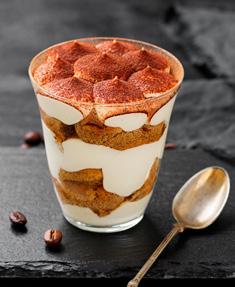
Your home restaurant
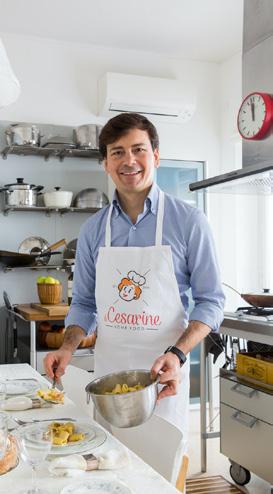
Dedicated to those who want to
experience the real regional culinary
tradition, the typical products of the territory and recipes handed down through the generations of Italian families. The “Cesarine” network - spread out over 140 Italian cities with over 1000 amateur chefs - has become established over recent years with this very aim: to offer a complete gastronomic experience by opening up the doors of home with lunches and dinners, personalised show cooking, cooking competitions, visits to markets or local producers or catering in exclusive locations. Having lunch with an Italian family, with dishes prepared following the typical traditions of the local cuisine, tasting the wines of the territory, is a truly unique experience! And from this year live cooking courses and virtual appointments are available on the cesarine.com website, in both Italian and English, so you can continue to learn family recipes and all the secrets of traditional cuisine.


